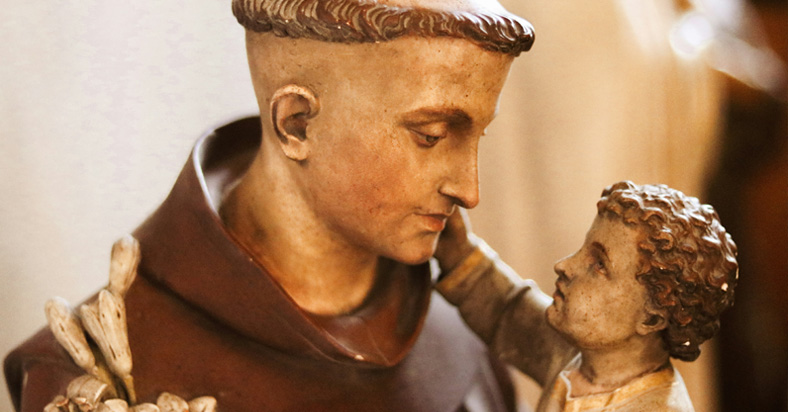St. Anthony of Padua: The Patron of the Poor and Wonder-Worker
•Priest and Doctor •Feast day: June 13 •1195-1231
St. Anthony of Padua, born in Lisbon, Portugal, in 1195, has long been venerated as the Patron of the Poor and is renowned for his exceptional holiness, eloquence, and miraculous intercessions. His life journey, marked by a profound devotion to God and tireless service to others, continues to inspire millions around the world.
Early Life and Vocation
At the tender age of 15, Anthony joined the Augustinian Monks of Coimbra, where he was ordained as a priest. His early years were characterized by deep spiritual contemplation and a growing desire to emulate the lives of martyrs. This desire was intensified in 1221 when the relics of five Franciscan martyrs were brought from Morocco to Portugal. Anthony felt a powerful calling to follow in their footsteps, prompting him to transfer to the Franciscan Order.
Mission to Africa and Unexpected Journey
Anthony’s zeal for spreading the Gospel led him to Africa to preach to the Muslims. However, his mission was cut short by illness, necessitating his return to Portugal. Divine providence intervened when his ship was driven off course, landing him in Sicily. From there, Anthony made his way to Assisi, where he had the privilege of meeting St. Francis of Assisi.
Rise to Prominence
Assigned to a hermitage near Forli, Anthony’s humility saw him initially tasked with washing dishes. However, his hidden talents were soon revealed during an ordination for Franciscan and Dominican candidates. When no Dominicans were prepared to deliver the homily, Anthony was asked to speak. His eloquence and deep knowledge of the Scriptures astonished his superiors, leading to his appointment as a preacher throughout Italy and France. His sermons drew large crowds, and many heretics were converted by his gentle demeanor and superior biblical understanding.
St. Anthony holds the distinction of being the first Franciscan allowed by St. Francis to teach theology to his brethren, with the stipulation that such study should not quench the spirit of prayer and devotion.
Final Years and Canonization
The last years of Anthony’s life were spent in Padua, where his reputation as a miracle worker grew. He passed away at the age of 36 and was canonized the following year. His legacy as the Wonder-Worker endures, with numerous miracles attributed to his intercession.
Iconography and Patronage
St. Anthony is often depicted holding the Holy Infant, reflecting an incident where he was seen holding the Child Jesus. He is also portrayed with a book, symbolizing his profound knowledge of Holy Scripture, and a lily, representing his purity. Occasionally, he is shown with a mule, commemorating a miracle where a mule knelt before the Blessed Sacrament, leading its owner to believe in the real presence of Jesus.
As the Patron of the Poor, St. Anthony’s intercession is sought for finding lost articles. This tradition stems from an incident where a novice stole a Psalter, and Anthony’s prayers led to its miraculous return.
St. Anthony’s Bread
Alms given in his name, known as St. Anthony’s Bread, continue to support the poor, reflecting his enduring legacy of compassion and charity.
St. Anthony of Padua remains a powerful intercessor and a shining example of faith and devotion, inspiring believers to seek his aid in times of need and to emulate his life of service and piety.




